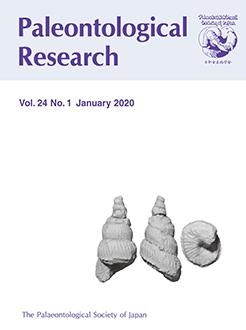The late early to middle Miocene limestone bodies in the Sagara and Izu Peninsula areas of central Japan are reefal deposits that were deposited under a tropical climate and provide a window into the paleodiversity of tropical volcanic islands in the northeastern Philippine Sea Plate. Specimens from the early middle Miocene Megami Limestone in the Sagara area and from the middle Miocene limestone blocks within the Yugashima Group on the Izu Peninsula are described as Turbo (Marmarostoma) histrioides sp. nov. and Turbo (Marmarostoma) izuensis sp. nov., respectively. Discovery of these two new species raises the number of Marmarostoma species from four to six in the Sagara and Izu Peninsula areas, demonstrating that the subgenus was more diverse in the northeastern Philippines Sea Plate during the middle Miocene than it is today. In particular, there are double the number of Marmarostoma species (four species) from the middle Miocene in the Izu Peninsula compared with the modern fauna on the tropical islands of the Izu-Ogasawara Arc. The highest richness of modern species of Marmarostoma is found in the central Indo-West Pacific, where molecular phylogenetic studies have suggested that the subgenus rapidly diversified in the late Oligocene or early Miocene. Nevertheless, Miocene species of this subgenus are sparse in the central IWP, being incongruent to the diversity pattern expected from the molecular studies. The findings reported herein provide an insight into the origin of the central IPW biodiversity hotspot.
How to translate text using browser tools
1 January 2020
New Species of Turbo (Marmarostoma) (Gastropoda, Turbinidae) from the Miocene Limestone in Central Japan: A Window into the Miocene Marine Biodiversity in the Northeastern Philippine Sea
Tomoki Kase,
Susumu Tomida,
Keisuke Inoue,
Masahito Kadota
ACCESS THE FULL ARTICLE

Paleontological Research
Vol. 24 • No. 1
January 2020
Vol. 24 • No. 1
January 2020
central Japan
Marmarostoma
Miocene
Paleobiogeography
Philippine Sea
Turbinidae




